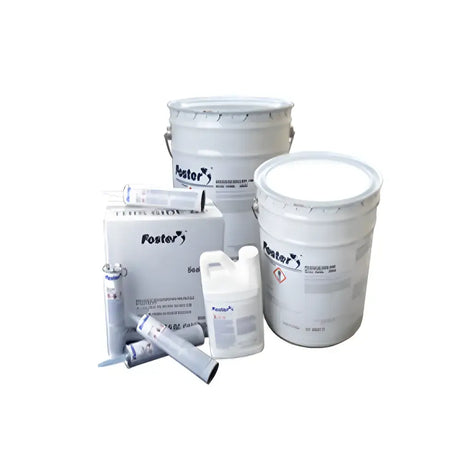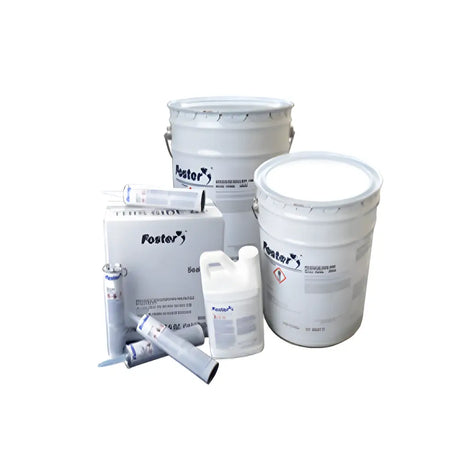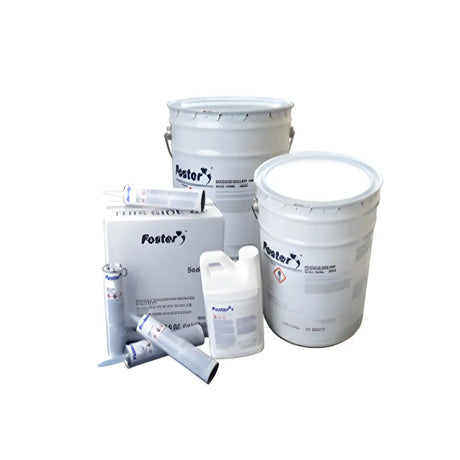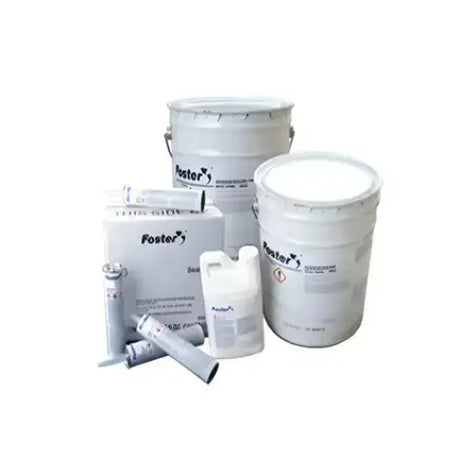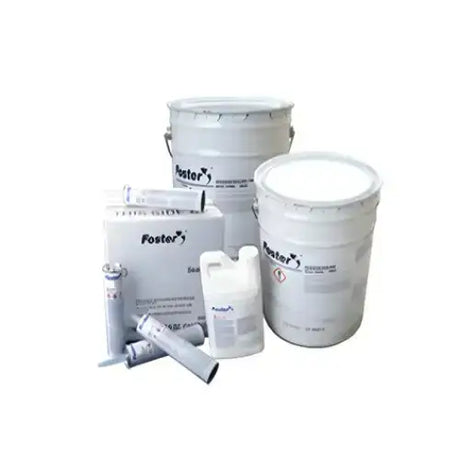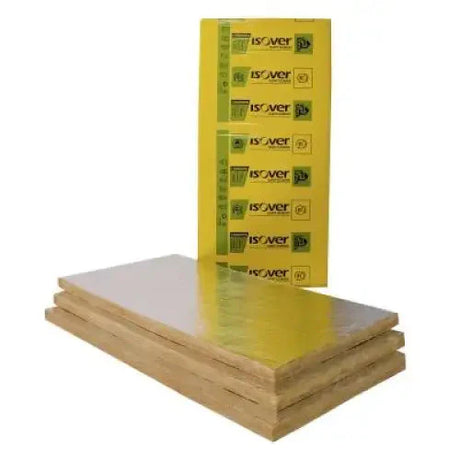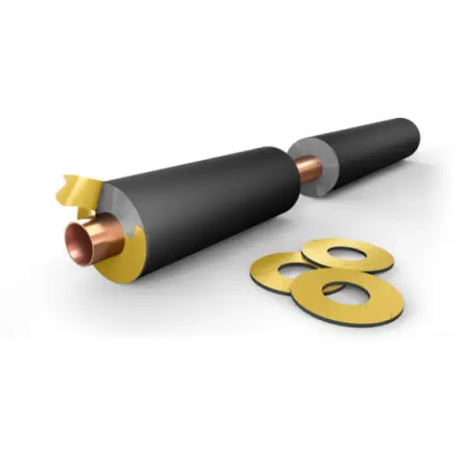In our quest for peace, elastomeric foam stands out as a top choice in managing noise, turning noisy places into quiet spaces. It makes buildings not just more energy-efficient but also quieter, thanks to its innovative use for soundproofing1. In the UK, where new architecture meets new technologies, figuring out how elastomeric foam changes our spaces is crucial for designing buildings.
Elastomeric foams are built to meet modern construction needs with their excellent thermal insulation and strong compressive strength1. Their superior insulating abilities and strength come from carefully designed polypropylene foams with honeycomb structures. These foams reduce noise and make buildings more in tune with their surroundings1.
Key Takeaways
- Elastomeric foam enhances the acoustic ambience within buildings, targeting specifically the challenge of urban noise intrusion.
- Advancements in material sciences have honed the sound absorption properties and mechanical durability of elastomeric foam, making it suitable for a wide array of building applications.
- Its applications stretch beyond mere soundproofing, contributing significantly to energy efficiency and thermal regulation within structures.
- The right balance of morphology and chemistry in rubber foams is vital to achieve the desired acoustic and thermal performance.
- Elastomeric foam stands as an eco-friendly and sustainable option when it comes to modern insulation materials.
Understanding Elastomeric Foam and Its Acoustic Benefits
Exploring insulation materials shows the importance of elastomeric foam. It's known for reducing noise and improving energy use in many industries. This synthetic rubber is popular for its sound blocking features. These features are valuable for creating quieter and more comfortable places to live and work.
The special layout of elastomeric foam consists of a closed-cell design. This design leads to excellent noise blocking abilities. In places like engine areas, which can get as hot as 850 degrees Celsius, this insulation can reduce heat. It makes surfaces cooler, up to 220 degrees Celsius, and also blocks sound2. It also lessens the risk of oil and fuel catching fire, a danger when temperatures are over 250 degrees Celsius2.
High-temperature insulation is usually made of three layers. It has an outer layer, an insulating middle, and a protective inner part. This mix helps keep heat in and reduces noise by also absorbing sound2. Thus, equipment and vehicles exposed to extreme heat up to 850 degrees Celsius get help. They stay cooler and quieter thanks to this type of insulation2.
Systems that manage air in buildings, like VAV units, are important. They keep the work environment comfortable. These systems need regular checks. This is to manage temperature, humidity, and air quality well. Good care stops problems like corrosion, which can hurt insulation and the health of buildings2.
Data shows new details on managing noise with elastomeric materials. Some elastomeric materials are especially good at absorbing sound3. We look at both open-cell and closed-cell foams. Open-cell types are better for managing echoes3. High-density polymer foams are studied closely. This shows how they work in blocking sound. It gives a clear picture of their role in high-performance insulation3.
| Material Type | Acoustic Benefit | Thermal Benefit |
|---|---|---|
| Elastomeric Foam | Enhanced sound absorption | Heat reduction to 220°C2 |
| Open-Cell Foams | High rates of compressive response | N/A |
| High-Density Polymer Foams | Morphologically analysed for acoustic management | Less heat loss2 |
Elastomeric foams do more than just quieten noise. They make life better by also being fire-resistant. This lowers the danger of toxic smoke during fires3. As research goes on, these foams become more critical. They're not just for industry use but also enhance our everyday life where safety and comfort matter.
The use of elastomeric foam is changing as industries and technology advance. It's used for managing noise in buildings and for car soundproofing. The demand for materials that deliver both performance and safety is growing. So, the value of elastomeric foams, known for their noise, thermal, and safety features, is expected to rise in innovation and sustainable living.
Elastomeric Foam in HVAC Systems: Reducing Noise and Vibrations
Elastomeric foam is key in making HVAC systems quieter and less shaky. Its unique open cell structure, made from synthetic rubber, boosts HVAC performance. This improvement is notable in both work and home settings.
Condensation Control with Closed Cell Structure
Temperature changes in HVAC ducts often lead to unwanted moisture. This can invite microbes and harm the structure. ArmaSound® Super Silence Ductliner's closed cell design stops condensation. It keeps the ducts dry and safe from harm, working between -20 °C to +85 °C4.
Impact on HVAC Ductwork Noise Levels
Good insulation like ArmaSound® Super Silence Ductliner targets noise that travels through air and structure. Without it, noise can seep into spaces, causing disturbances. Its use in big projects, like T3 - Indira Gandhi International Airport, has proven its ability to greatly lower noise. It's known for being quiet, fiber-free, and resistant to microbes. Plus, it's great at absorbing and damping sound4.
Eco-Friendly and Efficient Insulation Choices
Elastomeric foam is an excellent choice for the environment. It performs well in green projects, balancing eco-friendliness with top-notch functionality. Available in thicknesses from 6 mm to 50 mm, ArmaSound® Super Silence Ductliner also excels in fire safety. It belongs to Surface spread of flames Class 1. Its strong resistance to air erosion means it can withstand tough HVAC demands4.
The Science Behind Acoustic Properties Elastomeric Foam
In our noisy cities, we look for quiet. We use materials like elastomeric foam to help us. This material is great at soaking up sound and making things quieter. Scientists have worked hard to improve these materials. They've made big changes in how well they can manage sound56.
New technology in sound control shows a big step forward. With just a 5kV trigger, we've seen a change in how sound is blocked. This change makes it better at handling a wide range of noises5. These days, sound blockers can be adjusted. They can deal with everything from loud machines to people talking. This flexibility is great for dealing with common city noises that can range widely in pitch5.
Old-fashioned sound blockers worked well only within a small sound range. On the other hand, newer types can handle a much wider range of sounds5. By using advanced materials that look like flowers, scientists have found a clever way to block more low-pitched sounds. This new approach works three times better than older methods5.
Redefining how we approach sound control, acoustic metamaterials introduce unique qualities. These qualities allow for better manipulation of sound waves6.
Materials that think for themselves are filling gaps left by older sound blockers. These new materials can change shape or traits when exposed to light or electricity. This ability leads to better sound control across a wide range of pitches6.
| Acoustic Feature | Elastomeric Foam | Traditional Absorbers | Acoustic Metamaterials |
|---|---|---|---|
| Bandwidth | Broad (435Hz to 820Hz) | Narrow (±50Hz of peak) | Variable |
| Peak Frequency Tunability | Electrically Tunable | Fixed | Stimuli-responsive |
| Absorption in Low-Frequency Band | Effective (One to two octaves) | Limited | Highly Effective |
| Response to Stimuli | No | No | Yes (Adaptive) |
Elastomeric foam is a shining light for those wanting peace from urban noise. Its blend of unique abilities and adaptability not only lowers noise levels but also crafts a customised quiet tailored to our liking56.
From Manufacturing to Application: Elastomeric Foam in Building Projects
Elastomeric foam starts as raw material before becoming key in modern construction. It adds practical value and beauty to buildings. This balance makes it popular among architects and builders.
Production Process of Elastomeric Insulation Material
The making of elastomeric foam is detailed. It expands rubber to form a closed-cell structure for great insulation. Its design gives resilience and flexibility, fitting different building needs perfectly.
https://www.youtube.com/watch?v=vAOEMSJ3RLY
Production facilities maintain strict fire safety standards. They make foam that withstands up to 850 degrees Celsius. This is essential for safety in areas with high risks of fire2.
Incorporation in Modern Architecture and Design
Elastomeric foam fits well in today's building designs. It manages complex shapes while offering thermal and fire safety. It keeps interiors comfortable by handling air well, often hidden in roofs or basements2.
Comparing Elastomeric Foam with Other Insulating Materials
Elastomeric foam excels in providing thermal and noise insulation in tight spaces2. Its layers help manage heat and reduce engine noise. It meets strict laws against noise pollution2.
It also enhances air quality by stopping mold growth2. Choosing elastomeric foam depends on a building's needs and location. Its versatility and effectiveness are why it's widely used.
For more information on the acoustic qualities of elastomeric foam insulation, consider exploring this resource.
Elastomeric Foam for Automotive Applications: Enhancing Driver Comfort
Using elastomeric foam in cars helps make driving more comfortable and improves the car's performance. Its features help reduce cabin noise and manage heat better, which also helps save fuel. The car industry is using new materials to make driving quieter and more comfortable in terms of temperature.
Reduction of Engine Noise in Vehicle Cabins
Lowering engine noise is key in making cars quieter. ACOUSTIFLEX polyurethane systems, thanks to their design, are great at making cars less noisy. They are known for handling low-pitched sounds well. Huntsman Polyurethanes offers top-notch acoustic testing7, and Sika provides a variety of SikaDamp® options8 to keep engine noise out of the car interior. These advanced solutions, which include various types of foams from SikaBaffle® and SikaSeal®8, target engine noise effectively.
Heat Management and Fuel Efficiency Improvements
Elastomeric foam not only makes cars quieter but also better in terms of heating and fuel use. By controlling heat well, it helps save fuel. In today's world, where being eco-friendly is important, ACOUSTIFLEX systems are leaning towards green materials and supporting eco-friendly driving7. This move towards lighter materials means cars can go further on less fuel7. SikaDamp® products also help in carefully choosing where to apply them in the car8, offering a balance between heat control and keeping the car light.
To sum up, elastomeric foam plays a big role in making cars more comfortable by reducing noise and managing heat well. These changes lead to a better driving experience while also helping with fuel savings and environmental protection.
Optimising Acoustics in Design: Case Studies and Examples
The push for better acoustics in design has led to impressive growth in how we manage sound in buildings. This progress is highlighted at the 14th International Congress on Sound and Vibration (ICSV14)9. Here, we see how the latest research and practical uses come together to make our living and working places better through careful sound design.
A key example is using Statistical Energy Analysis to look into how stiffened panels behave when they're damaged. This is crucial for buildings where keeping noise down is important9. The advancement of Active Noise Control for active and semi-active systems has also pushed for better sound in architectural designs9. When it comes to flying, research in Aeroacoustics, like studying noise from nozzles and fans, is vital for keeping flights quiet and safe9.
New advancements in how we monitor conditions and analyse vibrations also mean we can spot and stop issues sooner. Discoveries in detecting gearbox faults and events in slow-moving bearings are from a dedication to better structural health9. Plus, computational acoustics is improving with new numerical methods and filters, allowing for more accurate sound simulations9.
Recently, fresh methods for spotting and diagnosing issues have emerged, like smart two-wire vibration switches. There's also been progress in enhancing signals from laser vibrometers. These findings have big effects on maintaining and improving the sound quality of buildings9.
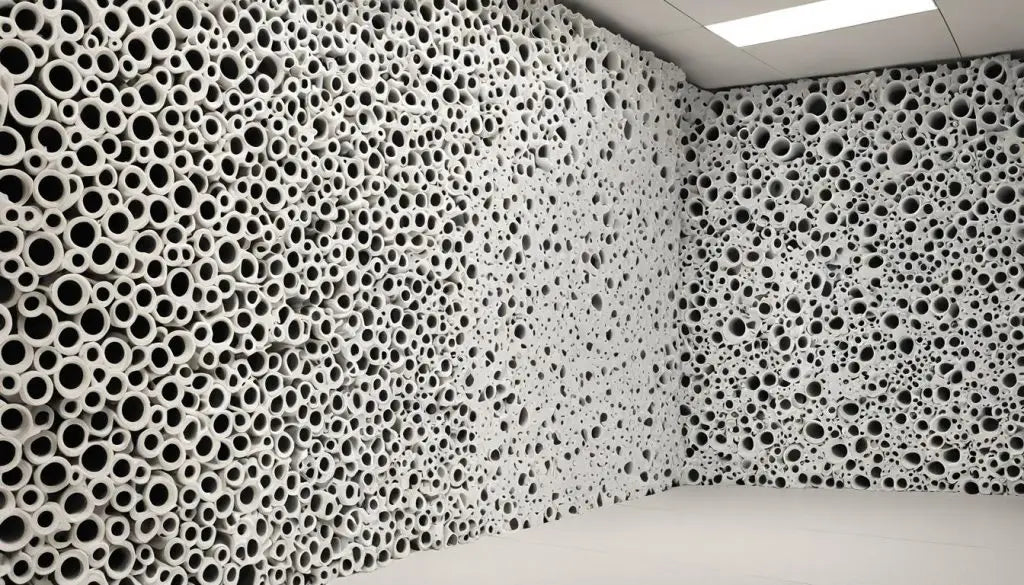
| Acoustic Innovation | Application in Design | Impact on Acoustics |
|---|---|---|
| Statistical Energy Analysis | Building Panel Analysis | Enhanced Noise Control |
| Active Noise Control | Living and Working Spaces | Improved Sound Quality |
| Aeroacoustics Studies | Aviation Noise Reduction | Increased Passenger Comfort |
| Condition Monitoring | Structural Health Monitoring | Preventative Maintenance |
| Numerical Schemes in Acoustics | Simulation of Acoustic Scenarios | Accurate Sound Design Prediction |
| Innovative Detection Methods | Maintenance and Quality Control | In-depth Structural Insights |
The field of optimising acoustics is always changing, with these research areas enhancing real-world design solutions. Such in-depth studies not only guide today's architectural projects but also light the way for tomorrow's breakthroughs. By merging technology with design, we're on track to improve how we experience sound every day.
Elastomeric Foam Insulation and Its Role in Fire Safety
The market for high-performance polymer foams is booming, expected to reach $122.4 billion by 202110. Elastomeric foam insulation now plays a huge role in building and industry safety. It's not just about keeping heat in or out anymore. It also plays a huge part in fire safety, an essential factor in construction and industrial use.
Elastomeric foam insulation, namely EPDM foam, is praised for withstanding elements like UV rays, rain, snow, and chemicals. This makes it perfect for tough outdoor and industrial environments11. Its ability to slow down fire due to its flame retardant qualities adds immense value. With a UL94 V-0 rating, EPDM foam offers top-notch fire safety, especially where fire or high temperatures pose a significant risk11.
Some elastomeric foams, such as Kaiflex KKplus s1 and KKplus s2, are designed to produce minimal smoke in fires. This helps with quicker and safer evacuations, reducing the risk from toxic fumes12. They follow strict European fire rules and provide up to 90 minutes of fire resistance. This is in line with DIN 4102-11 and EN 1366 standards, for various pipe openings12. Their compliance goes beyond the essential limits for smoke classes s1 and s2, proving a deep dedication to safety and material innovation.
EPDM foam's usage is broad, ranging from securing and transporting electronics like TVs, appliances, and phones11. Its insulating powers also protect these items, increasing their durability against environmental stresses.
When discussing the benefits of elastomeric foam insulation, it's important to mention its fit for multiple uses in industry and packaging. For instance, Kaiflex KKplus materials – s3, s2, and s1 – efficiently cover pipes needing 90 to 120 minutes of fire resistance without needing replacements during fires12. For larger pipes or those made from flammable materials, Kaiflex Pyrostar fire wrap easily meets R90 and R120 fire safety standards. This flexibility allows for seamless integration without the need for changes.
Looking at the growth trends in the polymer foam market, set to expand notably by 203010, elastomeric foam insulation stands out. Not only for its thermal and acoustic benefits but for its fire safety features as well. It reacts to thermal stress by expanding, thus protecting the insulating barrier12. This feature safeguards everything inside, offering a strong defense against fire.
Fire safety is a top priority, making the advances in elastomeric foam insulation noteworthy. It's a vital component in developing sustainable, energy-saving, and durable materials for future buildings.
Installation Techniques for Maximum Sound Absorption
Getting the installation right is key to making buildings quieter. Making sure the insulation fits perfectly and sealing all the cracks is vital. Elastomeric foam plays a13big role in controlling sound. Also, using new materials can make a huge difference in how quiet a space can be.
Best Practices for Insulation Fitting and Joint Sealing
To really reduce noise, you must follow the best steps for fitting insulation and sealing it. This means cutting elastomeric foam to the right size to avoid any gaps. This method has been shown to greatly improve how well a building can absorb sound13. So, it's crucial to use top methods for sealing, to stop sound from leaking and make the insulation work better.
Preventing Gaps and Thermal Bridging in Insulation
Avoiding gaps and stops in the insulation is also critical. When elastomeric foam is installed properly, it manages sound and keeps the building warm. Studies have shown that doing the installation right is tied to better sound absorption in buildings13. It's important to make sure everything fits closely together, using the latest sealing techniques. This approach greatly cuts down on noise and heat loss, making the space more comfortable and efficient.

| Characteristic | Impact on Sound Absorption |
|---|---|
| Transmission Loss Peak Shift | Improved low to middle-frequency range absorption5 |
| Acoustic Spectrum Tuning | Expanded absorption bandwidth from ~435Hz to 820Hz5 |
| Micro-perforated Panel Absorbers | One to two octaves absorption with specific orifice diameter5 |
| Biological Sound Absorption | Plants and flower-like structures can create band gaps to reduce noise5 |
Challenges and Solutions in Elastomeric Foam Recycling and Sustainability
The construction industry is now more focused on being green and lessening the effect of building materials on our planet. This makes elastomeric foam recycling very important. Even though it's good for soundproofing, there are concerns about its environmental impact when thrown away.
Environmental Impact of Foam Insulation Materials
Elastomeric foam insulation is key in saving energy and fighting climate change. But, there are issues when its life ends. The difficulty in recycling elastomeric foam highlights waste concerns and its long-term use. There's a big need for better recycling ways to stop foam waste from piling up and encourage eco-friendly actions.
For instance, Armatech's technology is a great step forward. It makes use of up to 95% of its waste to create ArmaSound products. This is a solid example of how to lessen the environmental footprint14.
Advanced Recycling Methods and Industry Initiatives
To fight environmental problems from elastomeric foam, industry changes are critical. Armasound, made from leftover foam, shows how waste can turn into something useful. It also meets key needs like being fire-safe, insulating well, and stopping leaks14. Using new recycling methods can also create jobs, as shown by Armatech's growth14.
There are rewards for green projects, like the special CE mark in Europe for saving energy15. This drives companies to do better and save more energy. Also, efforts to cut down city noise and manage water show the dedication to being green. For example, the HOSSANA project by Armatech is all about caring for the environment and working with the community14.
This shows that focusing on sustainable recycling of elastomeric foam can really make a difference. It helps both the planet and the insulation materials' future in the market.
Economic Implications and Market Trends for Elastomeric Foam Suppliers
Economic trends deeply affect elastomeric foam suppliers. They must understand and adapt to these trends to stay competitive. This sector's growth could be big, influenced by factors that affect contractors' and builders' costs and benefits. Suppliers are central to this growth, meeting varied industry needs. They help push for more energy-efficient and sustainable building.
Analysing the Cost-Benefit Ratio for Contractors and Builders
Contractors and builders see big value in using elastomeric foam. It's great for keeping heat in and noise out. From 2014 to 2019, the economy grew, boosting construction investments. This raised the demand for top insulation materials16.
Though these materials may cost more upfront, they save a lot of energy money in the long run. Abiding by tough energy laws makes them even more appealing17.
Global Market Dynamics and Potential Growth
The elastomeric foam market is set for a big leap. Valued at US$3.384 billion in 2022, it might reach US$5.891 billion by 202917. The biggest market growth is expected in Asia Pacific, particularly in China and India. Their HVAC needs and access to raw materials fuel this demand17.
New energy-saving rules also help the market grow17.
| Year | Market Size in USD Million | Projected CAGR |
|---|---|---|
| 2022 | 3,38417 | 6.33%17 |
| 2029 | 5,89117 |
Weather changes, pollution, and humidity worries also help the market grow17. Suppliers are working on these issues. Challenges like how to dispose of the foam and making consumers more aware are being tackled. New standards set in January 2022 aim to raise quality and safety17.
Conclusion
Elastomeric foam plays a crucial role in reducing noise and making buildings more comfortable. It's used in many areas like construction and cars. Understanding its features helps us use it better and improve the sound quality of spaces.
This foam is popular for soundproofing because it's so effective. Professional installation makes it perform at its best. It's also good for the planet and helps in preventing fires. This makes it a top choice for safe and eco-friendly buildings.
The use of elastomeric foam in controlling sound is expected to grow. It fits well into many different projects thanks to its great design and efficiency. As experts, we keep up with its developments to make our workspaces and homes better ().
FAQ
What is elastomeric foam?
Elastomeric foam is a type of synthetic rubber foam. It's used to manage sound in buildings due to its closed-cell structure. This makes the foam flexible and great at absorbing sound.
What are the acoustic benefits of elastomeric foam?
This foam is excellent at cutting down noise and absorbing sound in buildings. It helps to dampen vibrations and keeps heat in, too.
How is elastomeric foam used in HVAC systems?
In HVAC systems, elastomeric foam reduces noise and prevents vibrations. Its structure stops condensation and keeps moisture away. It's eco-friendly and insulates efficiently.
What are the acoustic properties of elastomeric foam?
Its rubber makeup and closed-cell design are key for sound absorption and noise reduction. That's why it's chosen for soundproofing projects.
How is elastomeric foam manufactured?
The making of elastomeric foam involves a special process. It's then used in building projects for its insulating properties. It's compared with other insulation materials in construction.
How is elastomeric foam used in the automotive industry?
It's used in cars to make rides quieter and more comfortable. It cuts down engine noise, manages heat, and helps improve fuel use.
Can you provide examples of how elastomeric foam has been used to optimize acoustics in design?
Sure, it's been used in different places like businesses and homes. It works well to make spaces sound better and more comfy.
What is the role of elastomeric foam insulation in fire safety?
It's important for keeping buildings safe from fires. Its fire-resistant features are a key part of building safety.
What are the best installation techniques for maximum sound absorption with elastomeric foam?
For the best sound absorption, it's key to fit insulation correctly and seal joints well. This avoids gaps that can let sound through.
What are the challenges and solutions in elastomeric foam recycling and sustainability?
Recycling this foam is tricky, but essential for building green. New recycling methods and industry efforts are helping make it more sustainable.
What are the economic implications and market trends for elastomeric foam suppliers?
Suppliers must keep up with economic factors and market trends. They have to look at costs and benefits for builders and track the market's growth chances.
How does elastomeric foam contribute to acoustic management in building projects?
It's key for managing building acoustics. Its special features reduce noise, soak up sound, and make indoors quiet and pleasant.
Source Links
- https://www.ncbi.nlm.nih.gov/pmc/articles/PMC9572381/
- https://www.gisinsulation.com/acoustic-qualities-of-elastomeric-foam-insulation
- https://www.ncbi.nlm.nih.gov/pmc/articles/PMC8153173/
- https://www.auralexchange.com/product/armasound-supersilence-ductliner/
- https://www.nature.com/articles/s44172-023-00159-z
- https://pubs.rsc.org/en/content/articlehtml/2021/ra/d1ra06493b
- https://www.huntsman.com/docs/Documents/144799_HPU_Automotive_acoustic_foam_brochure[7].pdf
- https://automotive.sika.com/dam/dms/global-industry/s/Brochure-ATM-Sika-Acoustics-WEB.pdf
- https://www.acoustics.asn.au/conference_proceedings/ICSV14/index.htm
- https://www.ncbi.nlm.nih.gov/pmc/articles/PMC9572835/
- https://worldwidefoam.com.mx/en/blog/espuma-epdm-caracteristicas-y-aplicaciones-industriales/
- https://www.kaimann.com/blog/planning-fire-safety-and-personal-safety
- https://www.specifiedby.com/armacell-uk/armasound-rd-240/Armacell-UK_ArmaSound-RD-240_Brochures_ArmaSoundRD240-ES.pdf
- https://www.bradford.ac.uk/sustainable-environments/industry-themes/acoustic/
- https://www.isover-technical-insulation.com/documents/brochures/tank-2024-final.pdf
- https://www.marketsandmarkets.com/Market-Reports/elastomeric-foam-market-164243544.html
- https://www.knowledge-sourcing.com/report/elastomeric-foam-market


